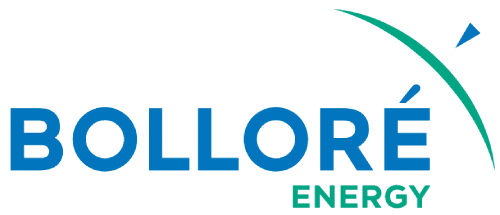Predictive AI : a strategic lever for your company
In an ever-changing economic environment, predictive artificial intelligence is becoming an essential tool for companies wishing to maintain their competitiveness. This technology is revolutionizing the way organizations anticipate trends and make strategic decisions, enabling them to stay ahead of the game.
What is Predictive AI ?
Predictive AI is based on advanced algorithms that analyze historical data to identify complex patterns. These patterns can be used to predict future events or behaviors with a high degree of accuracy. Unlike generative AI, which focuses on content creation, predictive AI aims to analyze and anticipate future trends.
How does Predictive AI work ?
Predictive AI uses technologies such as machine learning, neural networks and advanced statistical analysis. By processing vast volumes of structured data, it is able to extract actionable insights and deliver reliable predictions. Thanks to continuous learning from new data, AI constantly refines its predictions, becoming a powerful tool for companies seeking to anticipate future results and better guide their strategies.
Why adopt Predictive AI?
Predictive AI enables companies to anticipate market trends, optimize operating costs, improve customer satisfaction and reduce business risks. By using accurate forecasts, companies can adjust their operations in line with future developments, thereby maximizing efficiency.
Concrete applications of Predictive AI by Department
Predictive AI finds concrete applications in several departments of a company:
Sales
In sales, predictive AI enables sales to be forecast based on various factors such as seasonal trends and economic events. It also helps to identify the most qualified leads, optimize prices in real time and thoroughly analyze customer behavior.
Marketing
In marketing, predictive AI is used to personalize campaigns according to customer preferences, perform advanced customer segmentation and predict the ROI of advertising campaigns. It can also be used to optimize communication channels based on observed behaviors.
Production
In production, predictive AI plays a key role in improving predictive maintenance, enabling breakdowns to be prevented before they occur. It also contributes to intelligent inventory management, optimizes the supply chain and enables automated quality control, improving overall operational performance.
Human resources
In human resources, AI makes it possible to forecast recruitment needs, analyze turnover, optimize employee training and detect potential talent within the organization.
How to implement predictive AI in your company
There are several key steps to implementing predictive AI in a company. First, it’s essential to carry out an audit of the company’s needs and existing data. Next, you need to define the priority objectives to be achieved with AI. Once these objectives have been clarified, the company must select the most suitable technological solutions, then train teams in the use of these new tools. The deployment of AI must be gradual, with continuous measurement of results to adjust strategies according to the feedback obtained.
Success factors
To successfully implement predictive AI, several elements are essential. The quality of the data used is paramount, as poor data will lead to inaccurate predictions. The involvement of teams at all levels of the company is also crucial to ensure smooth adoption of the technology. Strong management support, a phased approach and ongoing performance measurement are also key success factors.
Return on investment
The benefits are both short- and long-term. In the short term, companies can expect to reduce operating costs, improve productivity and optimize internal processes. In the long term, this creates a sustainable competitive advantage, fosters continuous innovation and contributes to sustained growth.
Predictive AI success stories
A number of companies have already achieved impressive results. In the retail sector, for example, some companies have recorded a 25% improvement in the accuracy of their sales forecasts. In industry, maintenance costs have been reduced by 30% thanks to predictive maintenance. Finally, in the service sector, this technology has boosted customer satisfaction by 40% by better anticipating their needs.
How to get started with Predictive AI ?
To get started with predictive AI, it’s important to assess your company’s digital maturity. Next, identify the priority use cases where AI will add the most value. Once these use cases have been identified, you need to define a realistic budget for implementation, choose the right technology partners and ensure that your teams are trained in the use of these new tools.
Avoiding Common Pitfalls in Predictive AI Implementation
Implementing predictive AI can come up against several technical and organizational obstacles. On the technical side, it’s crucial to ensure data quality, the right choice of algorithms and the adoption of a suitable infrastructure. On the organizational side, resistance to change can hamper technology deployment. Inadequate team training or poorly defined objectives can also pose problems.
The future of predictive AI
Predictive AI continues to evolve rapidly, with several future trends emerging. We are seeing increased automation of processes, growing integration with the Internet of Things (IoT), and increasing adoption of edge computing, which enables data to be processed closer to the source. In addition, the explicability of AI algorithms has become a priority, with an increased effort to make model decisions more transparent.
Recommended Action Plan for the Adoption of Predictive AI
The adoption of this new technology must follow several concrete steps. First, an initial audit of requirements and data should be carried out over a period of one to two months. Then, a pilot project can be launched over three to four months to test technologies and processes. A first, larger-scale implementation can then be carried out over six months, before considering a full AI deployment over a period of 12 to 18 months.
Conclusion
Predictive AI is no longer an option for companies wishing to remain competitive, but a necessity. Its adoption, albeit gradual, can transform challenges into opportunities and create a sustainable competitive advantage. By following a structured approach and continuously measuring results, companies can exploit the full potential of this technology to improve their performance.
However, integrating these solutions can raise a number of challenges, particularly in terms of data management and organizational adaptation. Proper preparation and gradual implementation are essential to minimize disruption and maximize benefits. By properly structuring the transition, companies can not only optimize their internal processes, but also enhance their ability to anticipate market developments.
Advanced modeling tools, by automating forecasts and centralizing information, offer greater transparency and enable more accurate decision-making. These continuous learning systems also guarantee constant improvement in predictions, making companies more agile in the face of market fluctuations.
By adopting these technologies, organizations gain in flexibility and responsiveness, while reducing costs and anticipating risks. This proactive approach enables them not only to respond more effectively to customer expectations, but also to stand out from the competition thanks to a strategy based on reliable data.
Contact us today to find out how our predictive analytics solutions can transform your business processes and help you adopt this innovative technology. Together, we’ll design a strategy tailored to your needs, ensuring a successful digital transformation and sustainable competitive advantage, thanks in particular to our CCH Tagetik solution.

















